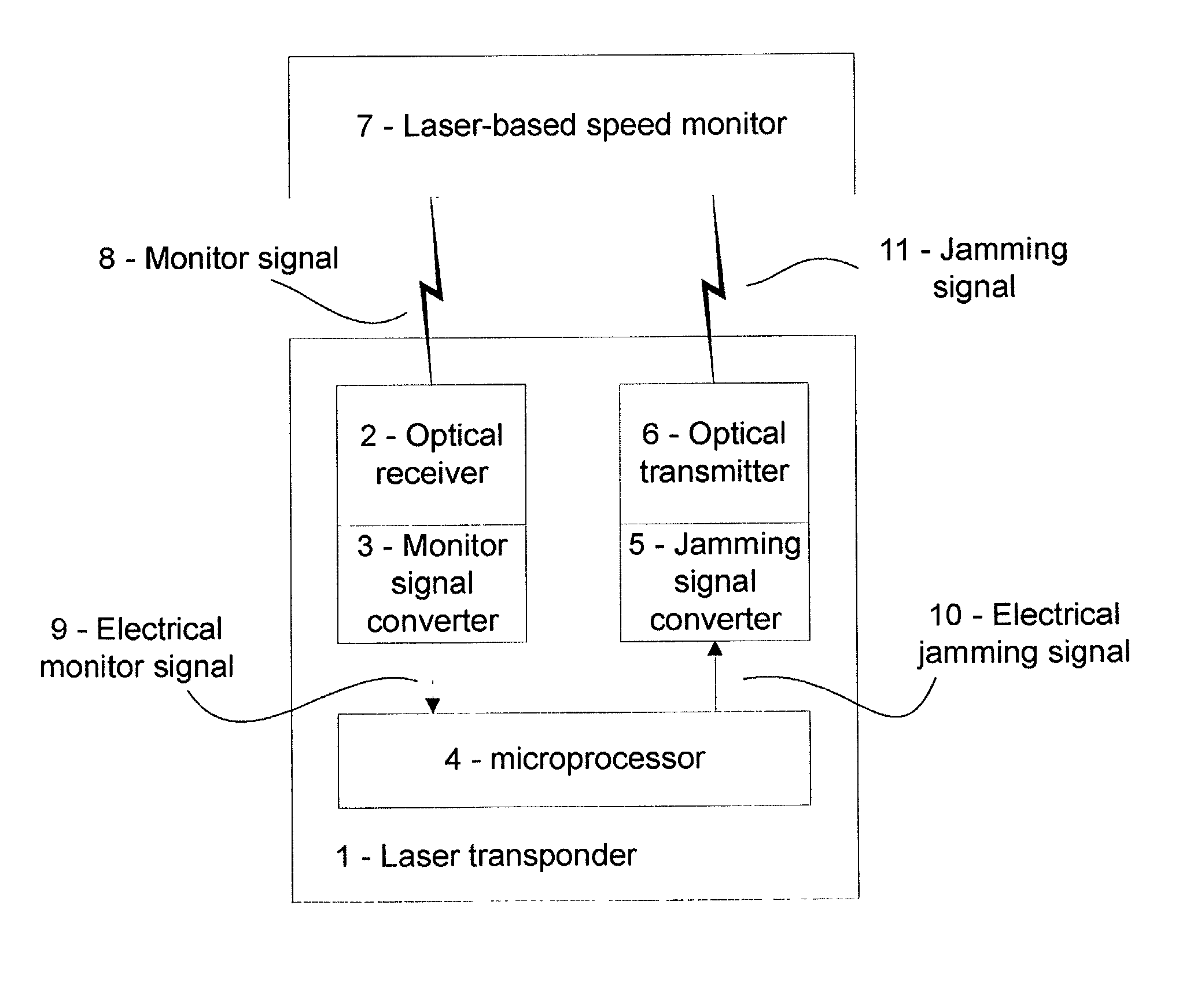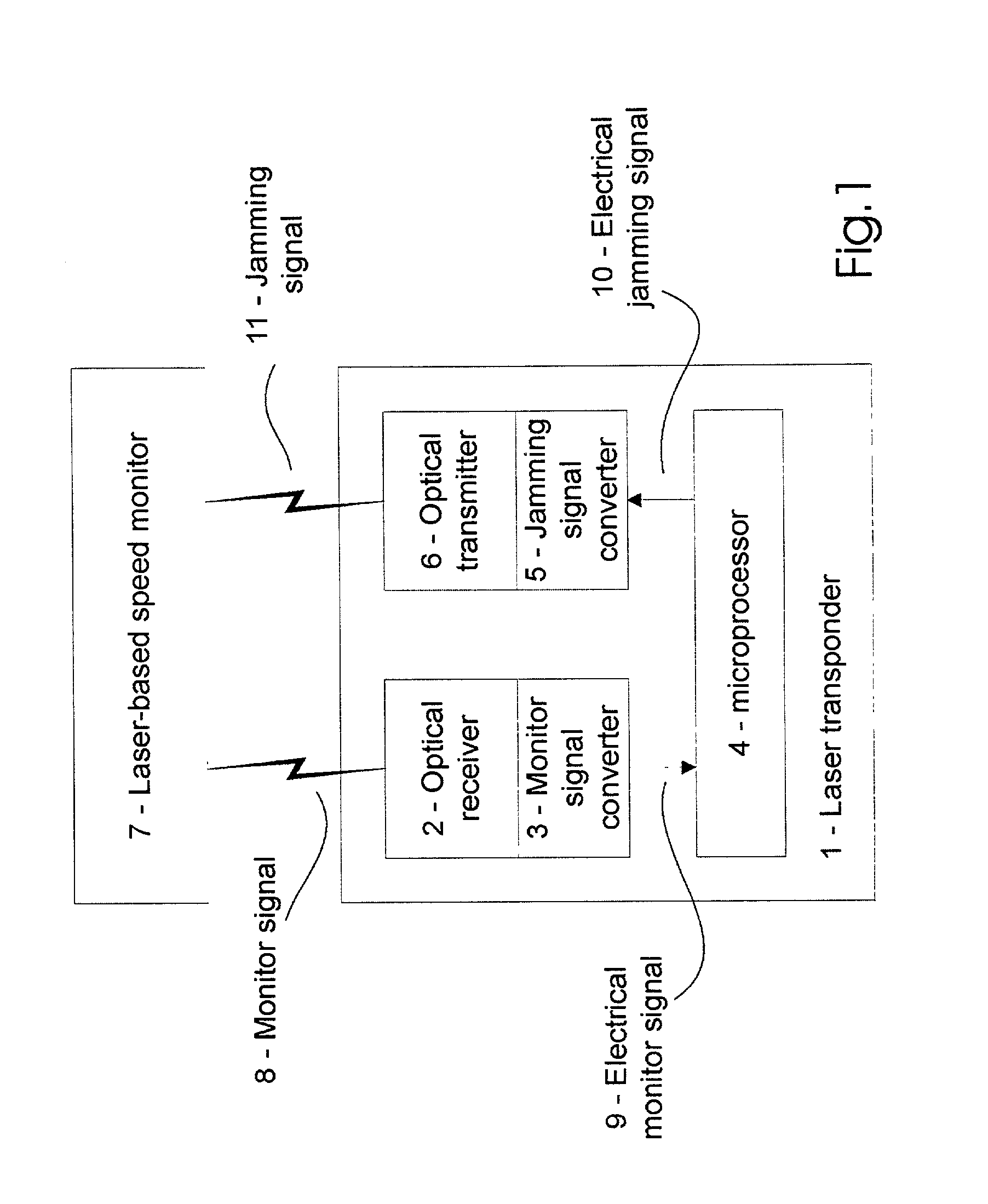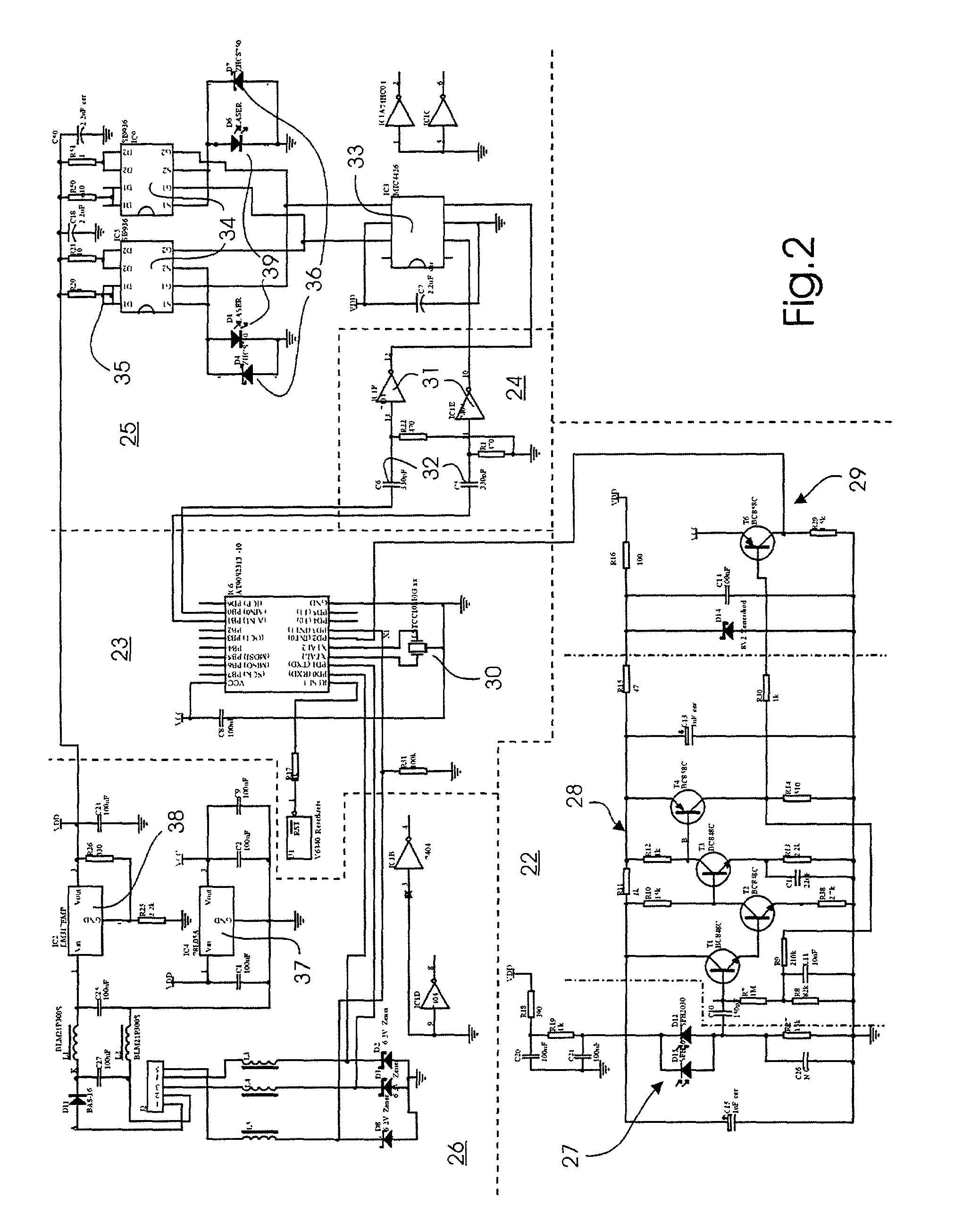Laser transponder
a transponder and laser technology, applied in the field of laser transponders, can solve the problems of reducing the performance of the two others, overheating the laser diode, rendering the system useless for that period, etc., and achieves the effect of low energy, not overheating, and high reliability of the communication link
- Summary
- Abstract
- Description
- Claims
- Application Information
AI Technical Summary
Benefits of technology
Problems solved by technology
Method used
Image
Examples
Embodiment Construction
[0026] As shown in FIG. 1, a laser transponder 1 in accordance with the invention comprises an optical receiver 2, a monitor signal converter 3, a microprocessor 4, a jamming signal converter 5 and an optical transmitter 6.
[0027] The optical transmitter 6 is in one embodiment a laser diode having typically a wavelength of 904-905 nm, and is in another embodiment an IR diode with a typical wavelength of 870 nm.
[0028] The microprocessor 4 stores in a database reference values for the frequency of at least some of a number of known monitor signals, and for each of these reference values also stores a corresponding value for another frequency of the jamming signal. In one embodiment these reference values are changeable.
[0029] During operation, a laser-based speed monitor 7 transmits a monitor laser signal 8, which is received by the optical receiver 2. The optical receiver transmits the monitor laser signal to the monitor signal converter 3, which in turn converts this signal into an e...
PUM
 Login to View More
Login to View More Abstract
Description
Claims
Application Information
 Login to View More
Login to View More - R&D
- Intellectual Property
- Life Sciences
- Materials
- Tech Scout
- Unparalleled Data Quality
- Higher Quality Content
- 60% Fewer Hallucinations
Browse by: Latest US Patents, China's latest patents, Technical Efficacy Thesaurus, Application Domain, Technology Topic, Popular Technical Reports.
© 2025 PatSnap. All rights reserved.Legal|Privacy policy|Modern Slavery Act Transparency Statement|Sitemap|About US| Contact US: help@patsnap.com



